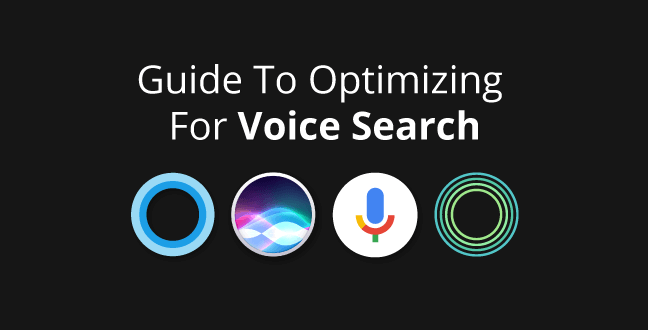
Introduction to Voice Search Optimization
Voice search is becoming more ingrained in daily life, with users turning to their smart devices for quick, hands-free searches. This trend is reshaping SEO as brands strive to rank for voice-activated queries. This guide covers everything you need to know about optimizing for voice search in 2024, from emerging trends to practical SEO techniques.
Why Voice Search Matters in 2024
Voice search now drives a significant portion of web traffic. As devices like Alexa, Google Assistant, and Siri become more advanced, they’re changing how users interact with the internet. Voice search matters because it’s fast, convenient, and aligns with the shift toward mobile-first, hands-free technology.
Key Trends in Voice Search for 2024
In 2024, several voice search trends are transforming SEO:
- Increased Use of Smart Speakers and Wearables: More households are using smart speakers for tasks like setting reminders and finding local services.
- Focus on Local Searches: Voice search is often used for location-based queries, making local SEO essential for businesses.
- Rise of Conversational AI: As AI becomes more conversational, search engines respond better to natural language.
The Role of Natural Language Processing and Conversational Search
Natural language processing (NLP) enables voice assistants to interpret the context and intent behind user queries. By understanding the conversational tone of questions, NLP can deliver more accurate answers. For brands, optimizing content with conversational keywords is crucial in reaching voice search users.
How Mobile Voice Search is Changing SEO
With mobile voice searches on the rise, Google and other search engines prioritize sites that load quickly and offer a seamless mobile experience. A mobile-friendly site with optimized voice keywords can enhance visibility and engagement.
Understanding Voice Assistant Technology
Voice assistant technology powers the voice search ecosystem, providing users with hands-free interaction. Major players like Google Assistant, Alexa, and Siri continuously improve their capabilities, understanding more complex commands and delivering precise answers. Staying up-to-date with these advancements helps businesses tailor content for each platform.
Best Practices for Optimizing Content for Voice Search
- Use Natural Language Keywords: Mimic how people speak, using question phrases and conversational tone.
- Optimize for Featured Snippets: Voice assistants often pull answers from snippets.
- Prioritize Speed: Ensure fast load times for mobile-friendly access.
Leveraging Featured Snippets for Voice Search
Featured snippets are essential for voice search because devices often use them to answer queries directly. Structuring content to target snippets by using bullet points, short summaries, and question-answer formats can increase a page’s chances of being selected.
Optimizing for Local Voice Search and User Intent
Local voice search is commonly used to find nearby businesses. Key optimization strategies include:
- Updating Google My Business: This boosts local SEO.
- Using Location-Specific Keywords: Tailor content to include terms like “near me.”
- Addressing Common User Intent: Anticipate customer needs, such as hours of operation and contact details.
Importance of Long-Tail Keywords in Voice SEO
Long-tail keywords are crucial in voice search, as queries tend to be more detailed than typed searches. By focusing on long-tail keywords, you can align content with the natural language users speak, enhancing chances of matching specific queries.
Voice Search Optimization Tips for Smart Speakers & Voice-Activated Devices
Smart speakers require specific optimization techniques. Content should:
- Answer Direct Questions: People tend to ask specific questions when using voice commands.
- Focus on Short, Clear Responses: Voice assistants prefer brief, easily digestible answers.
- Ensure Accuracy in Content: Double-check facts and figures to maintain credibility, as users rely on accurate information from smart devices.
Additional Considerations for Voice Search Optimization
To truly optimize for voice search, it’s essential to consider a few more factors that can help your brand’s content stand out in 2024. Beyond featured snippets and conversational keywords, brands can improve their voice search presence by focusing on structured data, user engagement, and accessibility.
Using Structured Data to Support Voice Search
Structured data, or schema markup, helps search engines better understand the context and content on your website. When you add structured data, you increase the chance that your content will appear as a rich snippet or in voice search results. Consider using schema for:
- FAQ Sections: Answering common questions can help your site appear in voice search answers.
- Local Business Schema: This is essential for businesses looking to capture local voice traffic.
- Product Information: Structured data can help with quick answers related to product specifications, pricing, and availability.

Enhancing User Engagement for Better Voice SEO Results
User engagement metrics, like time on page and bounce rate, can signal to search engines that your content is valuable. Optimizing for user engagement in the voice search landscape requires content that is both informative and conversational. Make sure your site:
- Offers High-Quality, Scannable Content: Users want information quickly. Break up text with subheadings, lists, and bullet points.
- Improves Page Load Speed: Faster load times improve user experience and support better SEO outcomes.
- Addresses User Intent Directly: Give users exactly what they’re searching for to reduce bounce rates and increase interaction.
Making Your Content Accessible Across Devices
Voice searches often come from mobile devices, smart speakers, and other voice-activated technology. This means optimizing for cross-device compatibility is essential. Here are some best practices for ensuring a seamless experience:
- Design Mobile-First Experiences: Responsive, mobile-friendly design supports voice search optimization, as many voice searches occur on smartphones.
- Focus on Readability: Ensure that fonts, text sizes, and page layouts are easy to read and navigate.
- Update Contact Information Consistently: Keep your contact information updated on both your website and third-party platforms (like Google My Business) to improve local search outcomes.
Future-Proofing Your SEO Strategy for Voice Search
As voice search technology continues to evolve, preparing your content for future trends is crucial. By consistently monitoring updates in voice AI, natural language processing, and search algorithms, you can keep your content optimized and aligned with user expectations. A few final tips:
- Monitor and Adapt to New Voice Search Trends: As smart speakers and AI assistants become more advanced, the way they process voice queries will change.
- Experiment with Interactive Content: As voice search becomes more interactive, consider using audio content, such as podcasts, to engage users.
- Utilize Analytics to Track Voice Search Performance: Regularly evaluate how voice search is impacting your website’s traffic and identify areas to improve.
Final Thoughts
Voice search optimization is transforming the SEO landscape, making it essential for brands to adapt to the ways users are searching online. By focusing on natural language, long-tail keywords, mobile compatibility, and local SEO, brands can better meet user needs in 2024 and beyond. Structured data, mobile-first design, and featured snippets play a central role in helping your content gain visibility in voice searches. Embracing these best practices now will put your brand ahead of the curve in an increasingly voice-driven world







